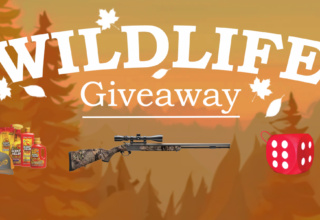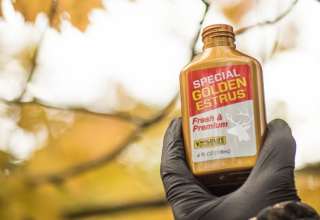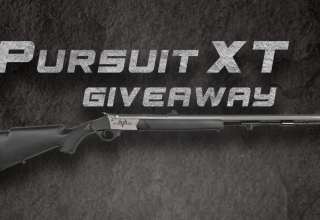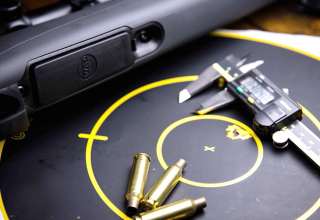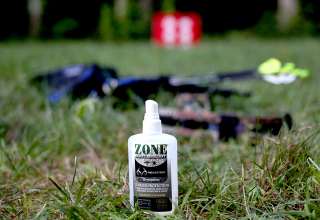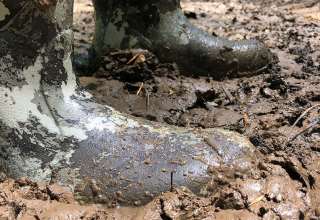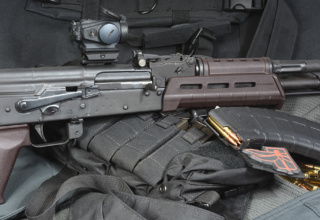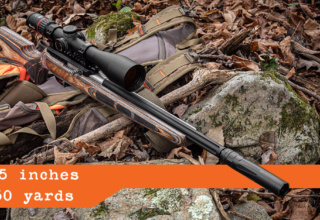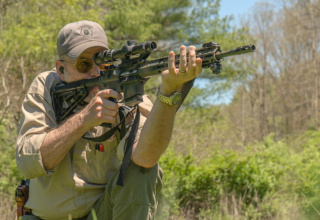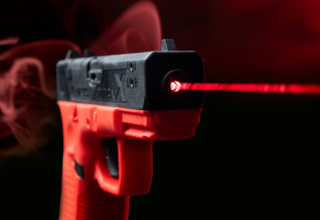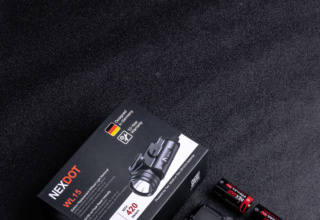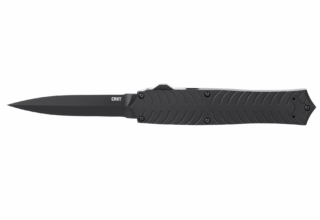As early October begins to roll around, hunters are anticipating the chasing phase or pre-rut period of the whitetail season. This time of year is marked by bucks of all age classes beginning to leave calling cards all over the woods. Rubs and scrapes dominate the landscape as bucks try to warn other bucks of their territory and attempt to lure does to their scrape for possible romance.

Scrapes are areas of scratched-out dirt beneath an overhanging limb. The bucks will, in essence, find a suitable location where they believe does frequent. They will then, using their front hooves, scratch out an area anywhere from the size of a frisbee to as large as a truck hood. Above this scratched-out piece of dirt, the buck will rub his orbital glands on a limb and usually bite the limb so that it hangs down directly over the scrape. After this, the buck will urinate along his tarsal gland, located in the joint of his hock, and deposit scent into the scrape telling all who come close by, this is his scrape. His hope is that this will attract a receptive doe who, when inclined, will then come to the scrape and urinate in it leaving a “calling card” of her scent.
 Bucks, active in the pre-rut period, will make dozens of these scrapes and check them regularly to see if a willing doe has stopped by. This will then lead him to the doe in hopes of breeding with her.
Bucks, active in the pre-rut period, will make dozens of these scrapes and check them regularly to see if a willing doe has stopped by. This will then lead him to the doe in hopes of breeding with her.
Many years ago, hunters began experimenting with hunting scrapes. Knowing that the buck will come by and check it at some point, hunters began sitting over scrapes hoping to intercept a buck coming to check his scrape. Some of these bucks will just wander downwind and scent check the scrape, while other times they will come in and freshen them up. In this process, hunters began making “mock scrapes” to see if they could lure in other bucks, in essence, a scrape decoy. And it worked – remarkably well. Through the years, this technique has evolved, and hunters have gotten a lot more sophisticated with how and where they make these mock scrapes. Here is a step-by-step method for making mock scrapes that will increase your chances of luring in the buck of your dreams.
- First and foremost, find an area that has high traffic – especially doe traffic. Bucks will build their scrapes where the does are, so find a well-used trail, old logging road, even a field edge that has a lot of usage. Areas near food sources are always great choices.
- Decide where you want your tree stand, if you have to hang one. If bow hunting, keep it relatively close – inside 25 yards. If you are gun hunting, you can get further away, as long as you can see the area.
- Once you have your stand tree located, find a suitable tree with branches that extend about 5 feet off of the ground along the trail, road or path. Now (while wearing gloves), break the branch – but leave it hanging down.
- Directly under the hanging branch – also known as a licking branch – clear out all debris on the ground. I like to use a stick for this because it leaves gouges in the ground similar to hooves. Clear out an area at least 24” in diameter. I like them bigger, so I go at least 30-36” in diameter.
- Once this is done, hang the Magnum Scrape-Dripper® scent dispenser from Wildlife Research Center® on the branch over the scratched-out earth. This dispenser will slowly and methodically dispense scent into the scrape over a two-week time period, keeping your scrape fresh and active. The Magnum Scrape-Dripper will operate on 4 ounces of scent. Depending on the temperature it normally lasts 2-3 weeks before needing to be refilled. It only drips during daytime and shuts down during bad weather. It keeps your buck interested during the best hunting periods. The Magnum Scrape-Dripper comes with three different scents to get the reaction you want.
- Hunt! Now that you have your scrape active, it is time to hunt that scrape. Set up and prepare to hunt it hard during the pre-rut and even into the rut phase.
 A tactic I began using a while back was employing two mock scrapes within sight of my stand and using two different scents. Since we are never really sure what will excite the bucks into coming to investigate, by using a Hot Scrape scent with a Golden Scrape or even a Golden Estrus scent, it may get his attention and bring him in to look.
A tactic I began using a while back was employing two mock scrapes within sight of my stand and using two different scents. Since we are never really sure what will excite the bucks into coming to investigate, by using a Hot Scrape scent with a Golden Scrape or even a Golden Estrus scent, it may get his attention and bring him in to look.
Building and hunting Mock Scrapes is a deadly tactic that hunters should use more frequently, and you will see that the Wildlife Research Magnum Scrape-Dripper is a game changer when it comes to pre-rut and rutting bucks. When you combine this with the scent elimination system from Wildlife research, and maybe even a little Golden Estrus hanging in a nearby tree, you are greatly stacking the odds in your favor.


